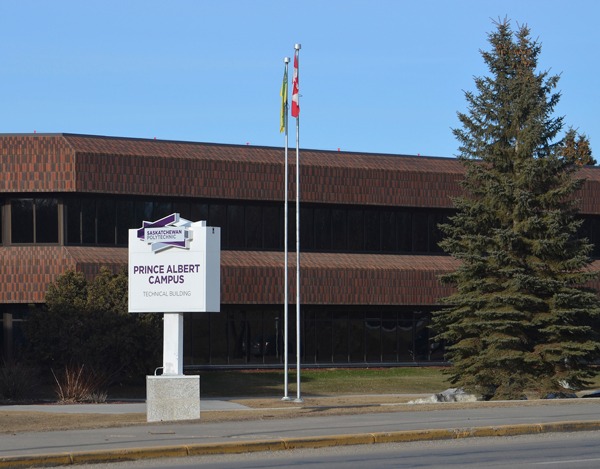Saskatchewan Polytechnic, the Prince Albert Model Forest and the Filipino non-profit organization Daluhay, Daloy ng Buhay (flow of life), are embarking on a new applied research project aimed at helping Indigenous communities contribute to environmental policy and program ideas at regional, national, and international levels.
“The overall goal of the project is to enhance access to digital data to support community-based resource management,” Robin Smith Director of Sustainably Led-Integrated Centres of Excellence (SLICE) said.
The project will run for the next two years. Smith is excited by the international nature of the project.
“It has a lot of benefits educationally, economically, culturally and we hope that everyone that’s involved—including the research team, community members and students—will have the opportunity to benefit from international exchange and learning from each other,” he said. “It supports a lot of goals that Saskatchewan Polytechnic has as a learning institution and also supports both ties between our regions of Saskatchewan and the Philippines.”
Smith said the partnership came about because Sask Polytech has a long-standing relationship with the Model Forest through their Prince Albert campus. The relationship with Daluhay came about because of an MRU on post-secondary education signed in 2022 by the province.
“Following that announcement, it was actually the President of Daluhay, the NGO in the Philippines who is originally from Canada himself but is based in the Philippines, (who) reached out to our Office of Applied Research and Innovation to see if there might be something that we could work on together,” Smith explained.
This is the first college/polytechnic project funded through Canada’s Tri-Agency New Frontiers in Research Fund (NFRF).
The project uses Sask Polytech’s expertise in remote sensing, remotely piloted aircraft systems, GIS and natural resource management. The team will digitize and develop data management tools for community-identified priorities in land and water stewardship.
This could include mapping of traditional ecological knowledge related to hunting, trapping, sacred areas, and watershed biodiversity and restoration according to community needs. The team will also draw on open-source geospatial data for mapping environmental parameters of interest.
“We are going to undertake a series of small scale demonstration action projects working with Indigenous and local communities in Saskatchewan and the Philippines with the goal to use digital tools geospatial mapping information that are available through satellite imagery and built-in training activities into the projects, and use that to actually undertake some small projects that the communities identify that are of interest to them,” Smith explained.
Smith added that this will involve parallel demonstration projects in both Saskatchewan and the Philippines.
“We will exchange information throughout about lessons learned and the process and how we’re going about it and working with community partners in both regions,” she said.
“It’s a really exciting partnership … with the international collaboration.”
Daluhay brings expertise in working closely with Indigenous and artisanal coastal fishers and farmers to develop community resource management strategies and capacity-building. Prince Albert Model Forest, a northern Saskatchewan non-profit, contributes expertise in community building founded on sustainable forest management.
“This international collaboration has already been rewarded, resulting in global impact through the provision of working concepts for the United Nations, focused on best practice transfer for nature-based adaptive change,” Co-principal investigator and Daluhay president Paul Watts said in a release.
The Sask Polytech research team includes multiple members from the SLICE the applied research centre embedded in the Faculty of Technology and Skilled Trades.
Supported by this unique international partnership on spatial applications, Daluhay has subsequently been endorsed by the United Nations Decade of Ocean Science for Sustainable Development. Daluhay is working to institutionalize a Philippine program, while also advocating for transferability to the Canadian Arctic, where cultural marine dependence for Indigenous communities is similar.
The Prince Albert Model Forest is also an important project partner. They provide a forum for Indigenous and Northern communities in Saskatchewan to collaborate on complex issues and opportunities related to sustainable forest management. In partnership with various First Nations, the Prince Albert Model Forest is actively identifying areas where technology and technical expertise can enhance the capacity for land management and stewardship at the community level.
“First Nations in northern Saskatchewan have comprehensive knowledge of their lands, waters and natural resources. Unfortunately, this knowledge is not always reflected in the maps and land use plans communities use to steward their reserve lands and broader traditional territories.” General manager of the Prince Albert Model Forest, Peter Friedrichsen said in a release.
In collaboration with Daluhay and Prince Albert Model Forest, Sask Polytech is actively seeking partners to join the community advisory committee and identify demonstration projects and sites for mapping and digitization.
The project aims to ensure that the research and findings from the demonstration projects are useful and usable for natural resource managers in Indigenous and rural communities and incorporates training and capacity-building activities throughout.
By addressing the global need for equitable data access and analysis, Smith said, this research project represents a significant step towards ensuring that Indigenous and rural communities benefit from digital resource management tools.
She added that the COVID-19 pandemic exposed inequities in access to digital resources, digital technology and food security.
“Since then there’s been a lot of interest trying to build back better to address some of those inequities. And this project I think will contribute to those goals specifically around access to digital tools and technology and also food security, which I think is on a lot of people’s minds these days,” Smith said.
She explained that the project aligns with the goals of SLICE.
“(I’m) really excited for that connection as well,” Smith said
Sask Polytech and project partners received $488,585 from the NFRF for this two-year project. NFRF supports world-leading interdisciplinary, international, high-risk / high-reward, transformative and rapid-response Canadian-led research.
michael.oleksyn@paherald.sk.ca


